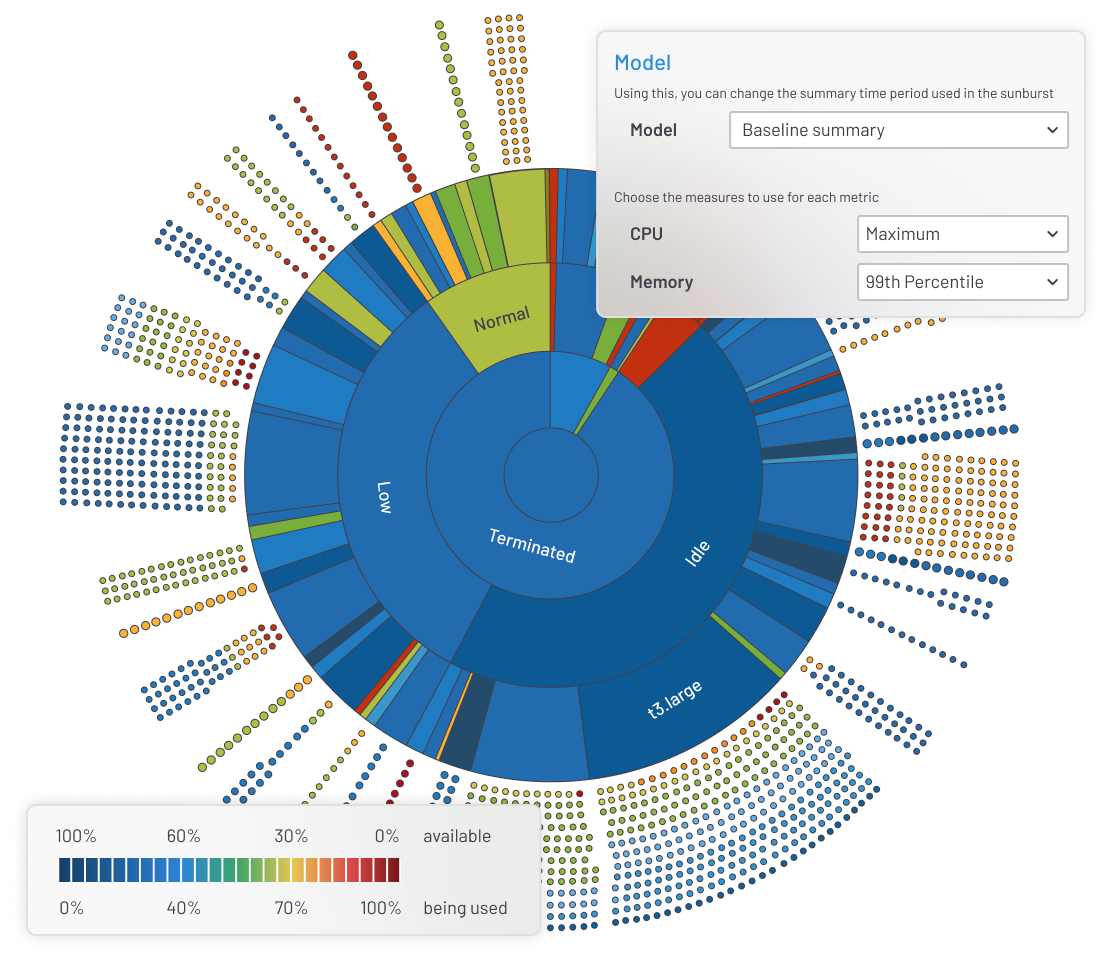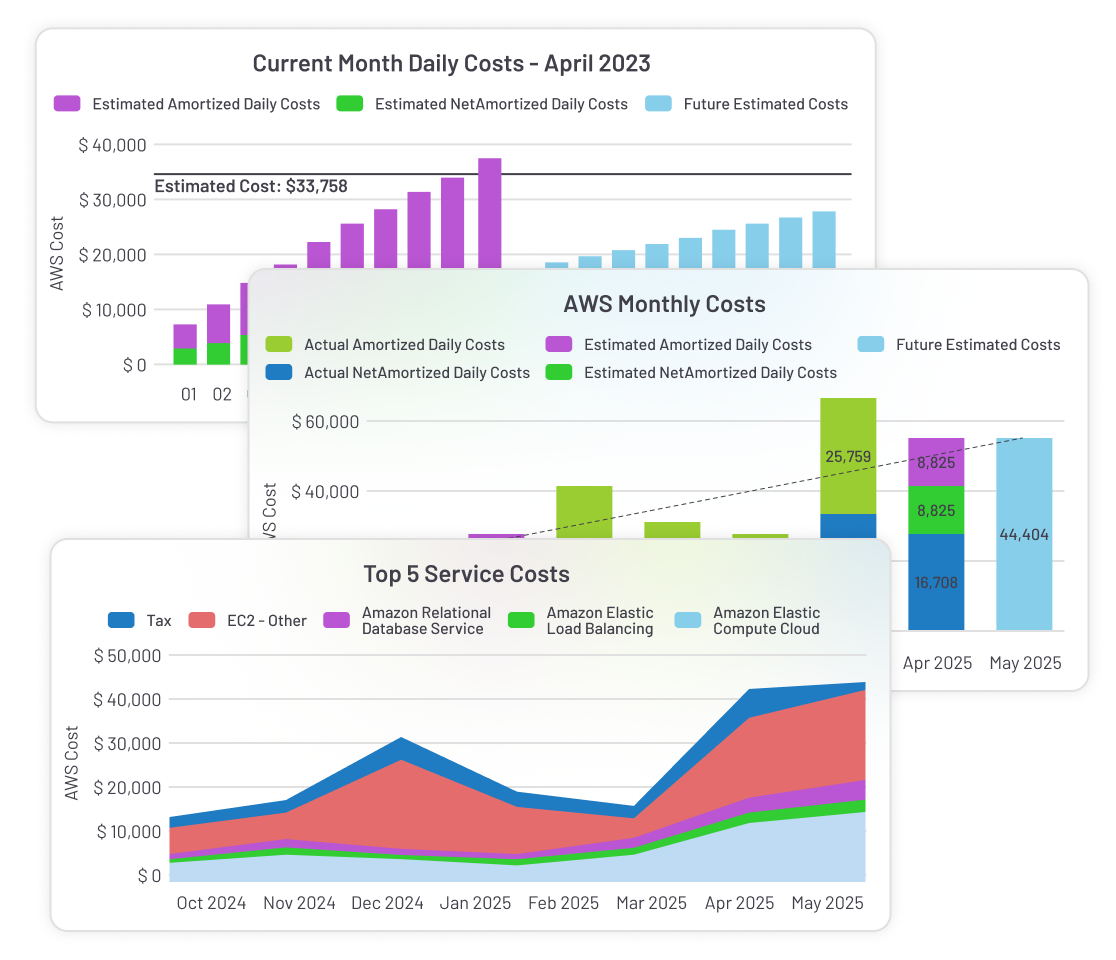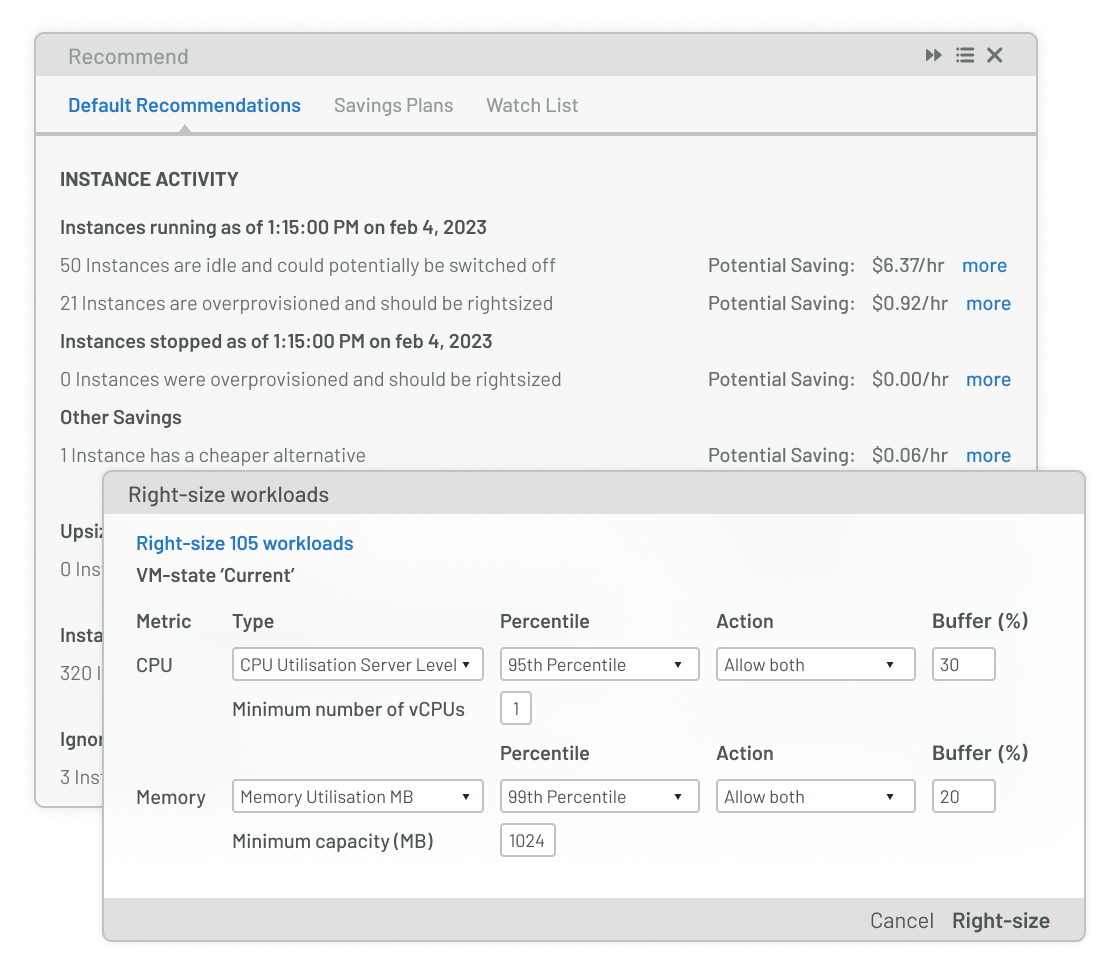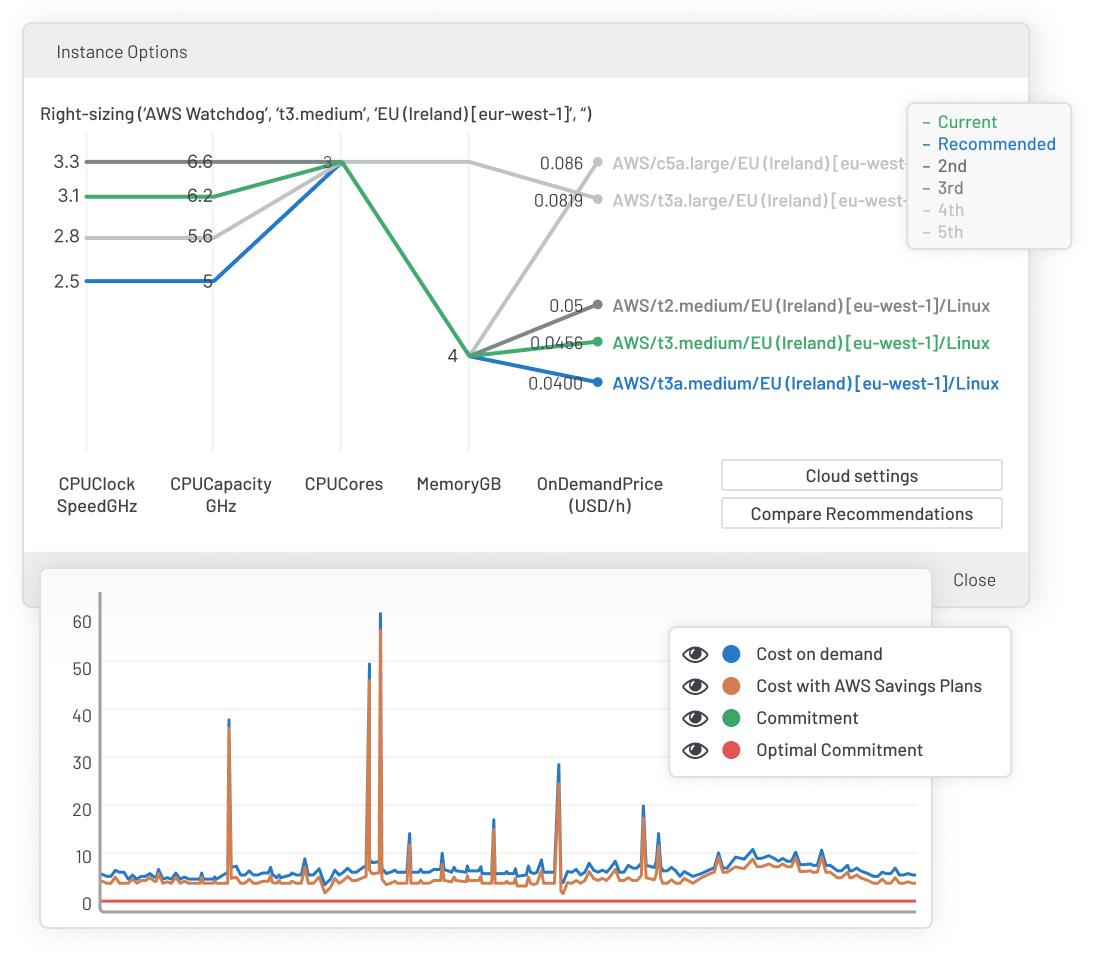Cloud Cost Management simplified in one platform
Don’t let spiraling cloud costs shrink ROI. Manage cloud costs & IT performance for on-premises and multi-cloud with a single intelligent monitoring platform.
ITRS is recognized in the 2025 Gartner® Magic Quadrant™ for Observability Platforms
Don’t let spiraling cloud costs shrink ROI. Manage cloud costs & IT performance for on-premises and multi-cloud with a single intelligent monitoring platform.

Right-size cloud instances needed for each application workload.
Right-buy cloud instances based on usage, cost and performance for optimal savings.
Forecast growth and upcoming costs with predictive analytics.
Optimize business processes using what-if scenario modeling.

Say goodbye to tool sprawl to lower costs and makes dynamic cloud environments easier to manage.
Share key cost data across business and engineering teams with easy-to-use, visually rich dashboards.
Avoid blind spots in forecasting cloud costs based on increased demand and likely utilization.
Eliminate complex billing models across vendors with one platform and one pricing structure.
Leverage machine learning for capacity planning. Supercharge your hybrid IT estate with advanced predictive analytics and operational intelligence.

Get message alerts on Slack, email or preferred notification tool when budget utilization exceeds defined parameters.
Configure alerts and actions to provide the right monitoring recommendations based on customized utilization triggers.
Enable auto-shutdown of unused and/or idle resources that are wasting money and affecting performance and ROI.

React instantly to data changes, alerts and recommendations in real-time.
Build and simplify your own customizable view of complex business processes for technical and business users.
Track thousands of infrastructure metrics out of the box.
Lead adoption across your business with an intuitive interface without the need for extensive training.
Sign up for a 1-on-1 demo session with one of our monitoring experts and witness firsthand how ITRS can help you optimize cloud spend and increase savings.